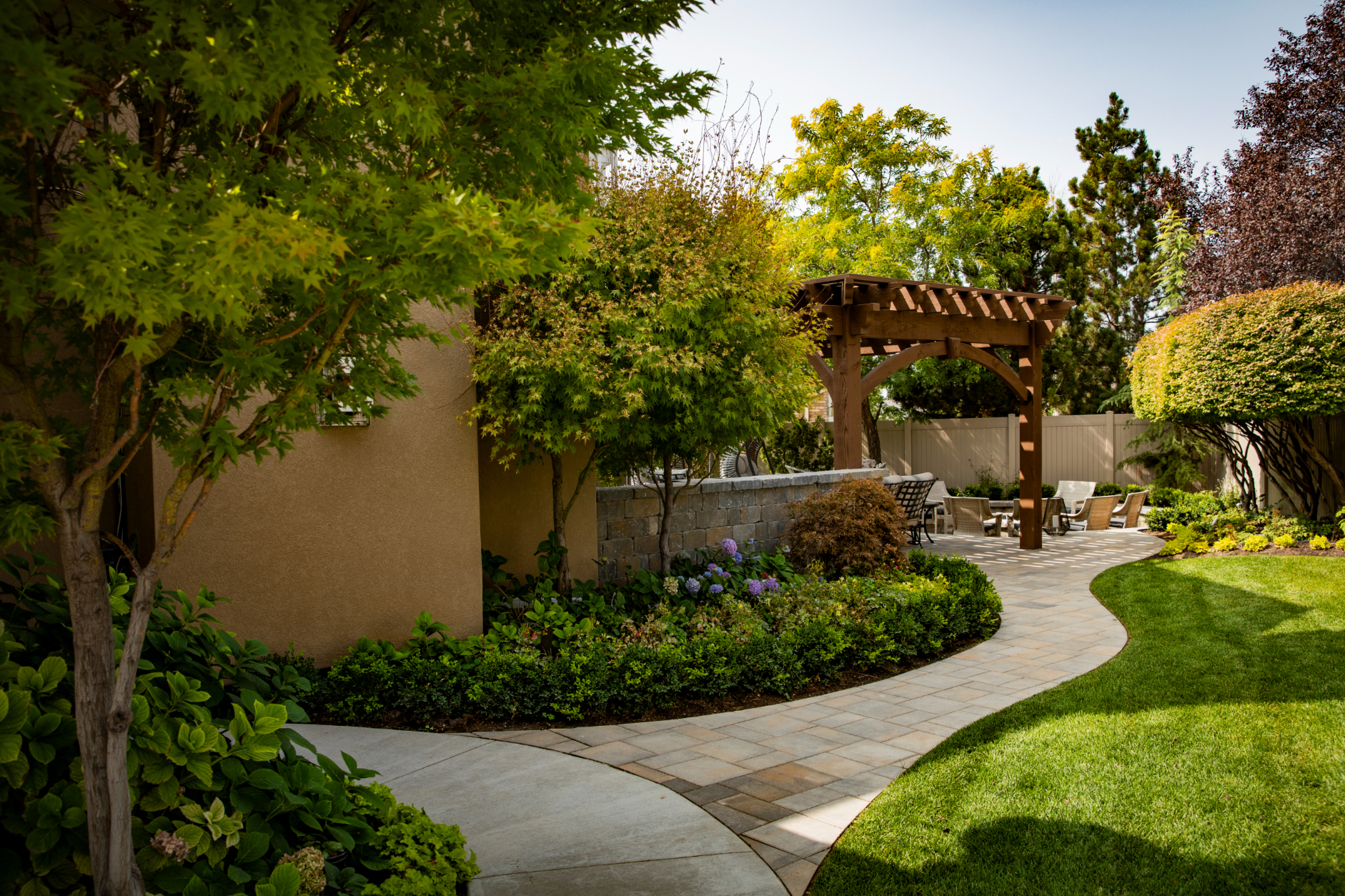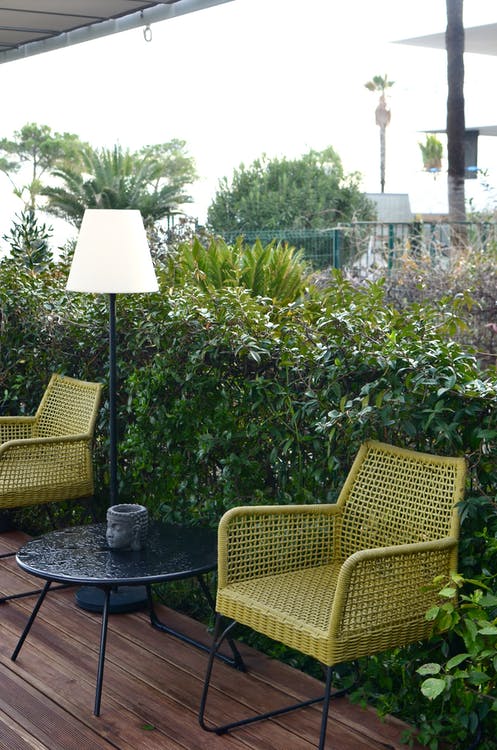When planning a landscaping project, it is essential to understand your site, consider your needs, use a form or style theme, and incorporate the five crucial elements of line, form, color, texture, and scale. By keeping these things in mind, you can create a well-designed and visually appealing landscape that meets your goals and enhances your outdoor space.

Understanding Your Site
When planning a landscaping project, it’s essential to understand your site. Consider factors like plant selection and activity location to create a cohesive and functional design. Remember your goals and needs, and use a theme to guide the shapes and spaces in your landscape.
Analyzing Your Site For Plant Selection
When planning a landscaping project, analyzing your site to ensure appropriate plant selection is crucial. Take note of the site’s natural conditions, such as sunlight exposure, soil type, and drainage. This analysis will help you determine which plants will thrive in your specific environment, reducing the risk of plants dying or not reaching their full growth potential. Consulting with a local horticulturist or using online resources can provide valuable insights into suitable plant species for your site.
Determining Activity Locations
Another essential aspect to consider when planning your landscaping project is determining the activity locations within your outdoor space. Consider how you and your family will use the area and what activities you want to accommodate. Do you envision a designated space for entertaining guests, a play area for children, or a quiet corner for relaxation? By identifying these activity locations, you can design your landscape accordingly, ensuring that each room is functional, comfortable, and visually appealing.
Understanding your site is a crucial step in planning a landscaping project. Analyzing your site for plant selection will help you choose the right plants to thrive in your environment. Determining activity locations allows you to design your landscape to accommodate your desired activities. By considering these factors, you can create a beautiful and functional outdoor space that suits your needs and enhances your enjoyment of your property.

Considering User Needs
When planning a landscaping project, it is essential to consider the users’ needs. This includes understanding what they want and need, selecting appropriate plants, and organizing spaces efficiently. Keep these factors in mind to ensure a successful and user-friendly landscape design.
Identifying Goals And Needs
When planning a landscaping project, it is essential first to identify your goals and needs. What is it that you want to achieve with your outdoor space? Perhaps you wish to create a relaxing oasis or a vibrant garden for entertaining. Determining your goals will help guide the rest of your planning process.
Consider the specific needs of your space as well. Are there any existing structures or elements that you need to work around? Is there a particular function or activity you want to accommodate, such as a play area for children or a designated space for outdoor dining? Identifying these needs will allow you to tailor your design to meet them effectively.
Thinking About Themes
Once you clearly understand your goals and needs, it’s time to think about themes for your landscaping project. Choosing a theme can help create a cohesive and visually appealing outdoor space.
Consider the style and architecture of your home. Do you want to create a garden that complements the existing aesthetic, or do you prefer a contrasting theme that adds visual interest? Consider the atmosphere you want to create—a tropical paradise, a zen retreat, or a formal and elegant garden.
By selecting a theme, you can guide your design choices regarding colors, materials, and plant selections. It will also help ensure a harmonious flow throughout your outdoor space.
Creating And Linking Spaces
One of the critical aspects of a successful landscaping project is creating and linking spaces effectively. Your outdoor space should be divided into functional areas seamlessly flowing together.
Start by visualizing how you want to use each area of your space. For example, you may want to designate a separate room for outdoor dining, lounging, gardening, or playing. Consider the size and shape of your space and the proximity to your house and existing structures.
Establish visual links between these different areas to create a sense of unity. This can be achieved through pathways, hedges, or design elements such as pergolas or archways. These elements not only guide the movement throughout your outdoor space but also add a sense of depth and interest.
Remember, when planning a landscaping project, it is crucial to consider user needs. By identifying your goals and needs, thinking about themes, and effectively creating and linking spaces, you can create an outdoor space that meets your requirements and enhances the overall aesthetic and functionality. So, take the time to carefully consider these aspects before diving into your project.
Using Design Elements
When planning a landscaping project, using design elements effectively can make a difference in creating a visually stunning outdoor space. You can transform your backyard into a beautiful oasis by incorporating various design elements such as color, line, texture, form, and shape. In this section, we will explore the five aspects of landscaping, the importance of incorporating symmetry and balance, and the addition of water features to enhance the overall appeal of your landscape.
Exploring The Five Elements Of Landscaping
Landscaping comprises five main elements: color, line, texture, form, and shape. Each piece is crucial to creating a cohesive and visually appealing outdoor space. Colors can be used strategically to create focal points and evoke certain moods, while lines can create movement and guide the eye. Texture adds depth and dimension to your landscape, while form and shape help determine your design’s overall structure and layout.
Incorporating Symmetry And Balance
One of the keys to a well-designed landscape is incorporating symmetry and balance. Symmetry creates a sense of harmony and visual appeal, making your outdoor space feel balanced and organized. You can achieve symmetry by placing identical or similar elements on either side of a focal point, creating a mirror-like effect. Balancing various aspects, such as plants, hardscape features, and outdoor furniture, can make a pleasing and relaxing environment.
Adding Water Features
Water features are a popular addition to any landscape design, adding tranquility, beauty, movement, and depth to your outdoor space. From a small fountain to a larger pond or waterfall, incorporating water features can create a soothing and peaceful atmosphere. The sound of flowing water can help mask outside noises and create a serene environment for you and your guests.
In conclusion, when planning a landscaping project, it’s essential to consider and utilize design elements effectively. By exploring the five aspects of landscaping, incorporating symmetry and balance, and adding water features, you can create a visually stunning and harmonious outdoor space that will envy your neighborhood.

Frequently Asked Questions Of Things To Keep In Mind When Planning A Landscaping Project
What Are 3 Important Considerations When Designing A Landscape Plan?
When designing a landscape plan, there are three crucial considerations to keep in mind: 1. Understand your site: Take into account the specific characteristics of your site, such as soil type, sunlight exposure, and drainage, to ensure proper plant selection and location of activities.
2. Consider your needs: Consider what you want and need from your landscape, whether it’s a space for entertaining, a play area for children, or a peaceful retreat. Design your plan accordingly. 3. Use a theme or style: Choosing a form or style theme can help guide the shapes and organization of your landscape.
This will create a cohesive and visually appealing design. By considering these three factors, you can create a landscape plan that is both functional and aesthetically pleasing.
What Are The 5 Basic Elements Of Landscape Design?
The five essential landscape design elements are color, line, texture, form, and shape. These elements are crucial in creating a visually appealing and harmonious outdoor space.
What Are Five Pieces Of Information That Should Be Included In A Landscaping Plan?
A landscaping plan should include five pieces of information: 1. Plant selection and activity location based on the site. 2. Consideration of user preferences and needs. 3. Use of a theme to determine shapes and organize spaces. 4.
Incorporation of line, form, color, texture, and scale in the design. 5. Addition of water features for beauty and tranquility.
What Are The 7 Steps To Landscape Design?
The seven steps to landscape design include understanding your site, considering your needs and wants, using a theme to determine shapes and spaces, making your plants work for you, structuring your plantings, highlighting key points, and paying attention to detail.
Conclusion
When planning a landscaping project, there are several important factors to remember. Understanding your site and its specific conditions will help you select the right plants and determine activity locations. Consider your needs and preferences, and create a cohesive theme or style to guide your design.
Pay attention to the five main elements of landscaping – color, line, texture, form, and shape – and incorporate them harmoniously. Finally, don’t forget to consider the geographic features of your location and how water drainage will be managed. By keeping these things in mind, you can create a beautiful and functional landscape that meets your goals and enhances your outdoor space.

Hi, I’m Esrat, and I’m so glad that you found me here at Happy Food Kitchen! I started Happy Food Kitchen in 2023 to have a creative, right-brained outlet to balance my very left-brained career in genetics.



